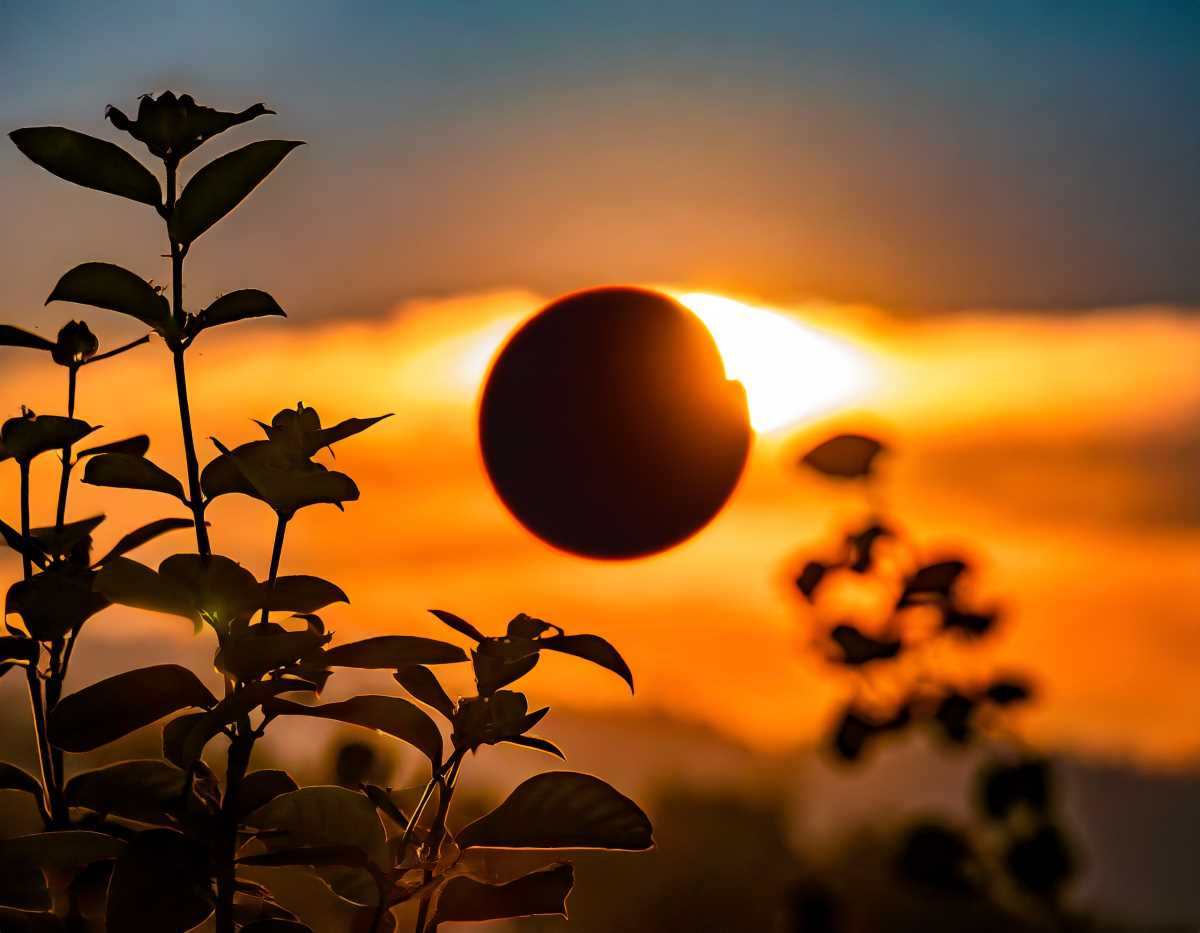Eclipse Eyecare: How Not to Get Blinded by the Light
The expert warns against the deceptive allure of solar eclipses, emphasizing the risks of eye damage from direct sun gazing. To enjoy safely, use filters or indirect methods, ensuring that the beauty of the cosmos doesn't compromise your vision.

The allure of a solar eclipse is undeniable. Dr. David Lozano, a luminary in the field of medicine at UNAM, likens it to a cosmic deception. A siren call to gaze upon the Sun as it morphs from a radiant circle into a mysterious black hole in the sky. But, as he warns, we must resist this celestial temptation. When the Moon obscures our star, an alluring halo forms, creating the illusion that it's safe to look.
However, this is far from the truth. Dr. Lozano reminds us that even during an eclipse, sunlight continues to filter through, laden with harmful ultraviolet and infrared rays. A brief exposure to these rays can leave an indelible mark – it can burn our retinas.
In the days following an eclipse, it's not uncommon for individuals to rush to doctor's offices, complaining that while their peripheral vision remains, they can no longer distinguish faces. This vision loss, as Dr. Lozano emphasizes, is irreversible. Ophthalmologists have little recourse when it comes to repairing the damage wrought by eclipse-induced solar retinopathy.
Author Stephen King, in his novel “Dolores Claiborne,” poignantly describes the experience of eye damage from gazing at an eclipse with the naked eye. It's a terrifying sensation of not being able to look away from the sun, and a realization that permanent damage may have been done. The outcome of such recklessness is, as King put it, a “big bluish spot” that might haunt one for life.
The science behind this optical catastrophe is straightforward, according to Dr. Lozano. When we fix our gaze upon the sun, even for just a few fleeting seconds, its intense light converges in the center of our macula, akin to a magnifying glass concentrating sunlight on a piece of paper. The result? A scar that forever impairs our central vision – the very essence of our ability to perceive fine details, recognize faces, or read.
So, let's pause for a moment and ponder the gravity of what we stand to lose if we don't act responsibly. Can you imagine a world where your parents', children's, or siblings' faces are no longer clear? Your daily activities thrown into disarray? These are just a few of the countless things we should tread cautiously about when it comes to eclipses.
While a casual glance at the sun under normal conditions triggers instinctive reactions like squinting and looking away, during an eclipse, these protective reflexes often falter. When the moon conceals the sun, the darkness tricks our eyes into staring unblinkingly, allowing harmful light to enter and wreak havoc – hence Dr. Lozano's assertion that during these moments, darkness is indeed a deception.
But when did the study of eclipses and their impact on our eyes become a concern for physicians? According to Dr. Lozano, the answer is as old as the need to see itself. Ophthalmology, in essence, has always been intertwined with humanity's quest for sight. The case of Galileo's vision problems, allegedly stemming from his unbridled solar observations, only underlines the long history of this connection.
Astrophysicist Fred Espenak, affectionately known as “Mr. Eclipse” for being NASA's ultimate authority on the subject, points out a dire consequence of gazing at even a fraction of the sun during an eclipse. When just one percent of the sun peeks over the lunar silhouette, that small portion becomes a staggering 10,000 times brighter than the full moon – a significant threat to our eye health.
So, what's the solution for those who want to witness this cosmic spectacle safely? Dr. Lozano proposes several options. You can craft a makeshift camera obscura by perforating a cardboard box – a DIY approach harkening back to the earliest days of photography. Another option, the favorite of many, is to view the eclipse through the foliage of trees. This offers a mesmerizing spectacle as countless small eclipses resembling twinkling coins are devoured by darkness.
Both of these strategies are indirect methods that shield your eyes from harm. However, if you're determined to look at the sun directly during an eclipse, you must use proper filters. And no, your trusty sunglasses won't suffice. As Dr. Lozano warns, any eyewear used for eclipse-watching must bear the special ISO 12312-2 certification.
As we prepare to marvel at future eclipses, let's remember the sage advice of Dr. Lozano – that it's possible to enjoy these celestial wonders responsibly. By doing so, we protect our eyesight and ensure that we can continue to witness many more eclipses in the future. So, let's embrace this astronomical marvel, but with a keen eye on our precious peepers.




